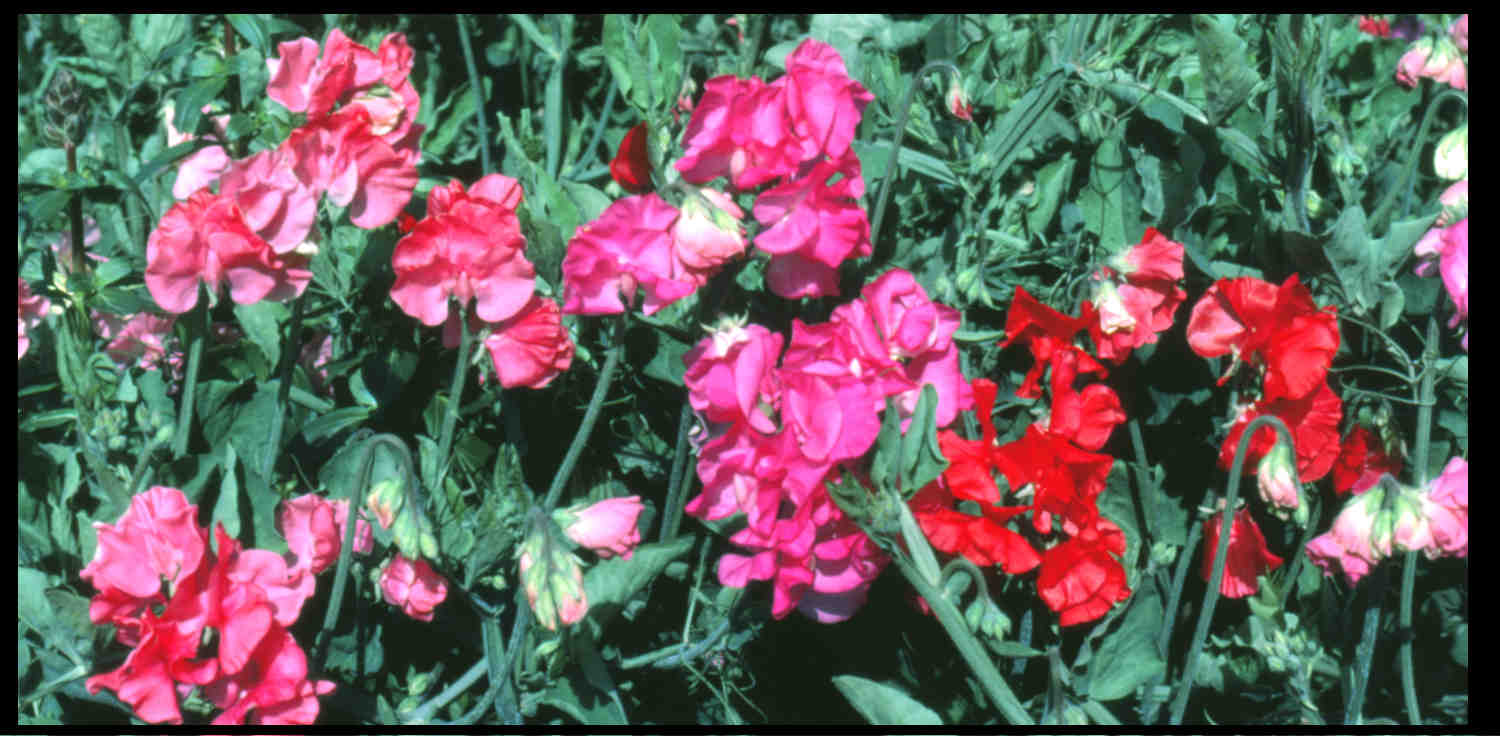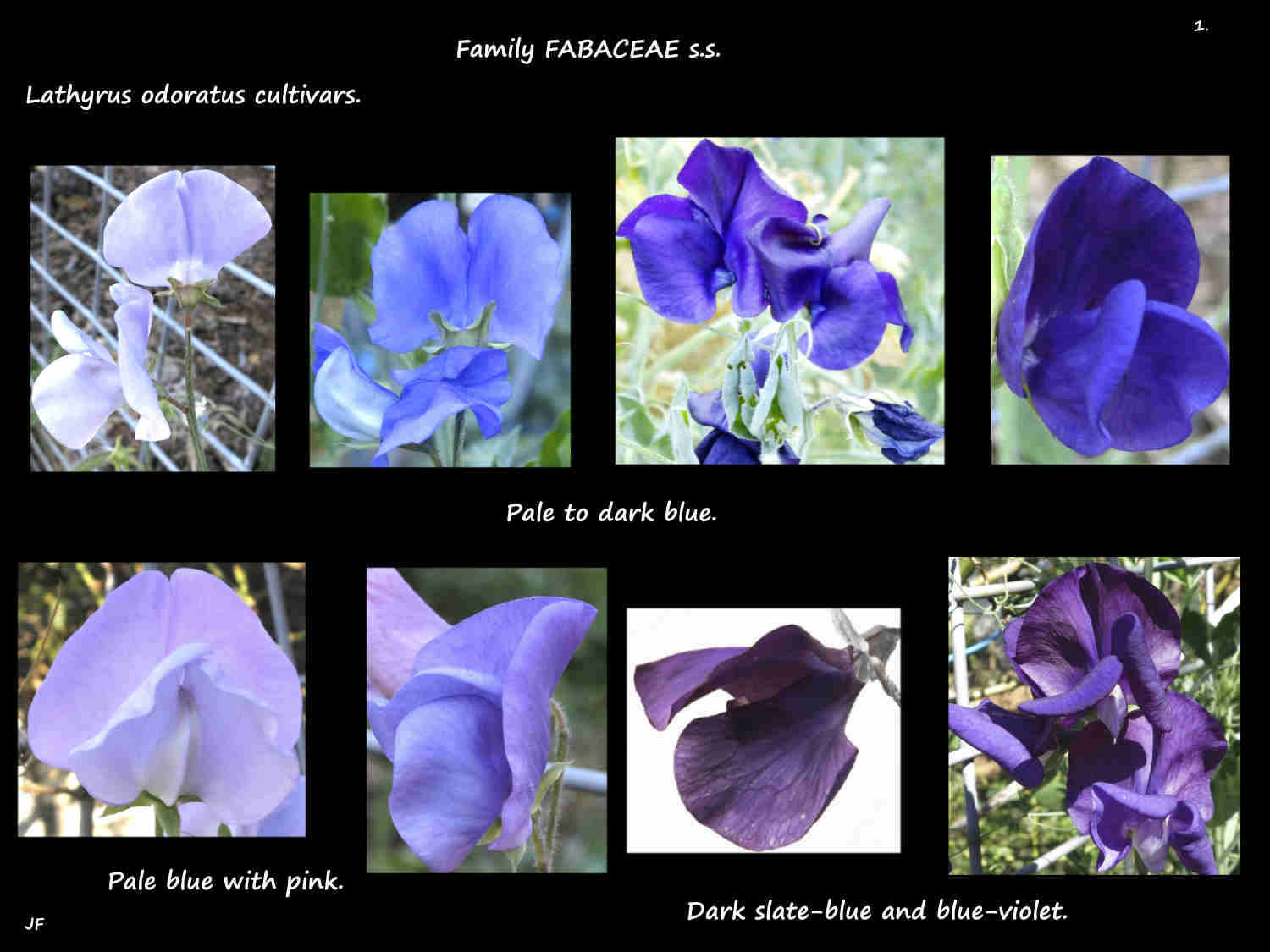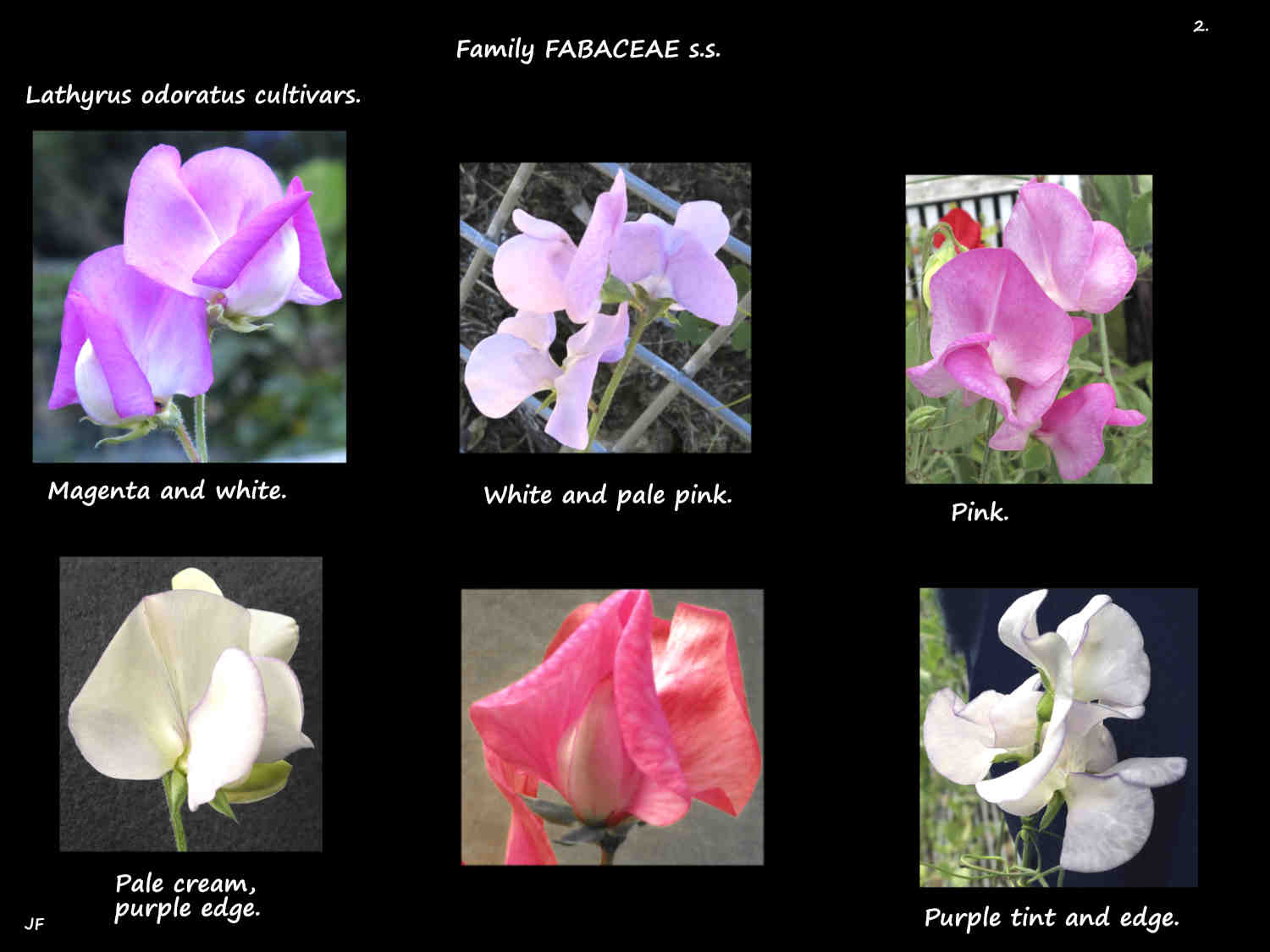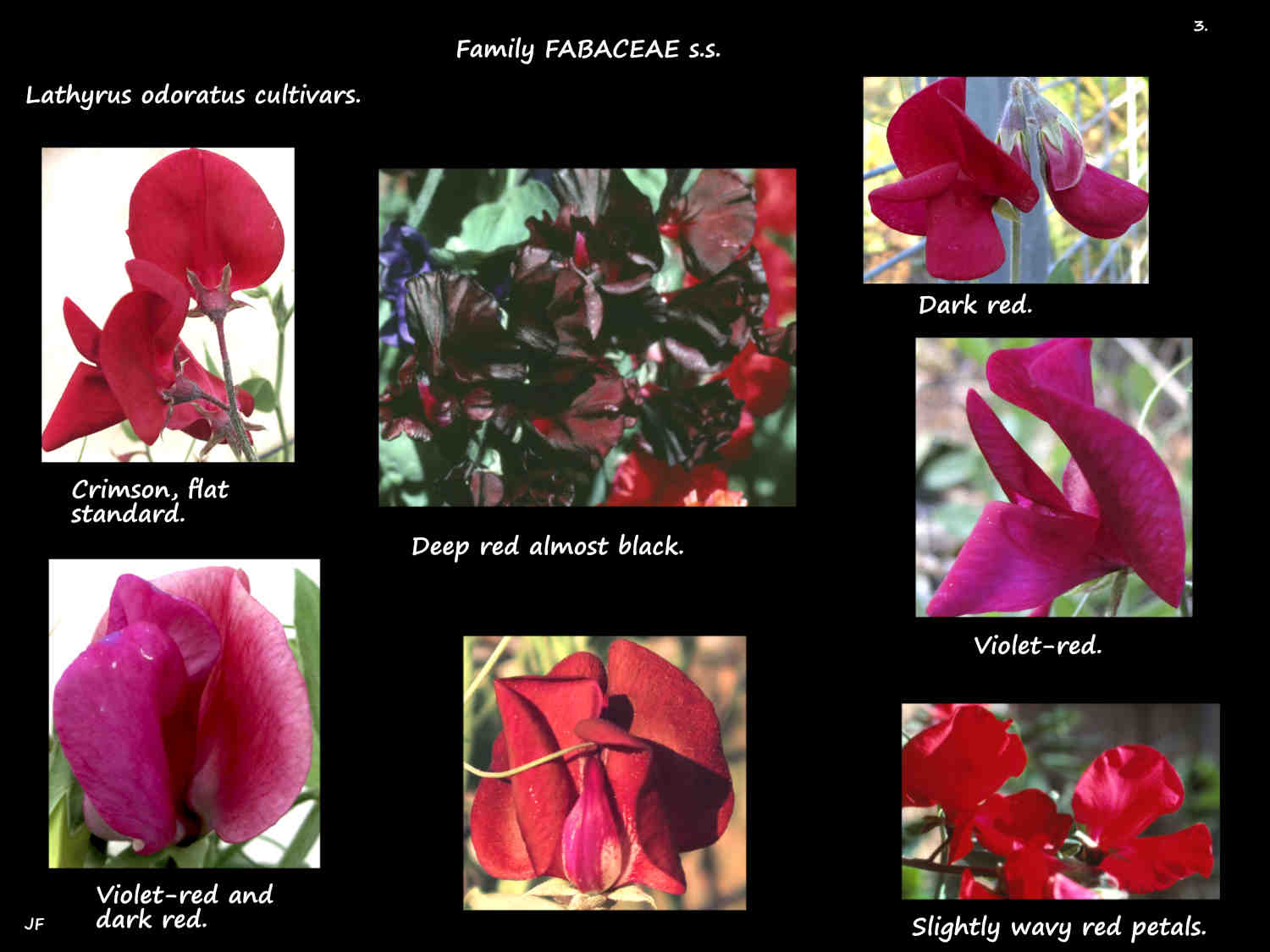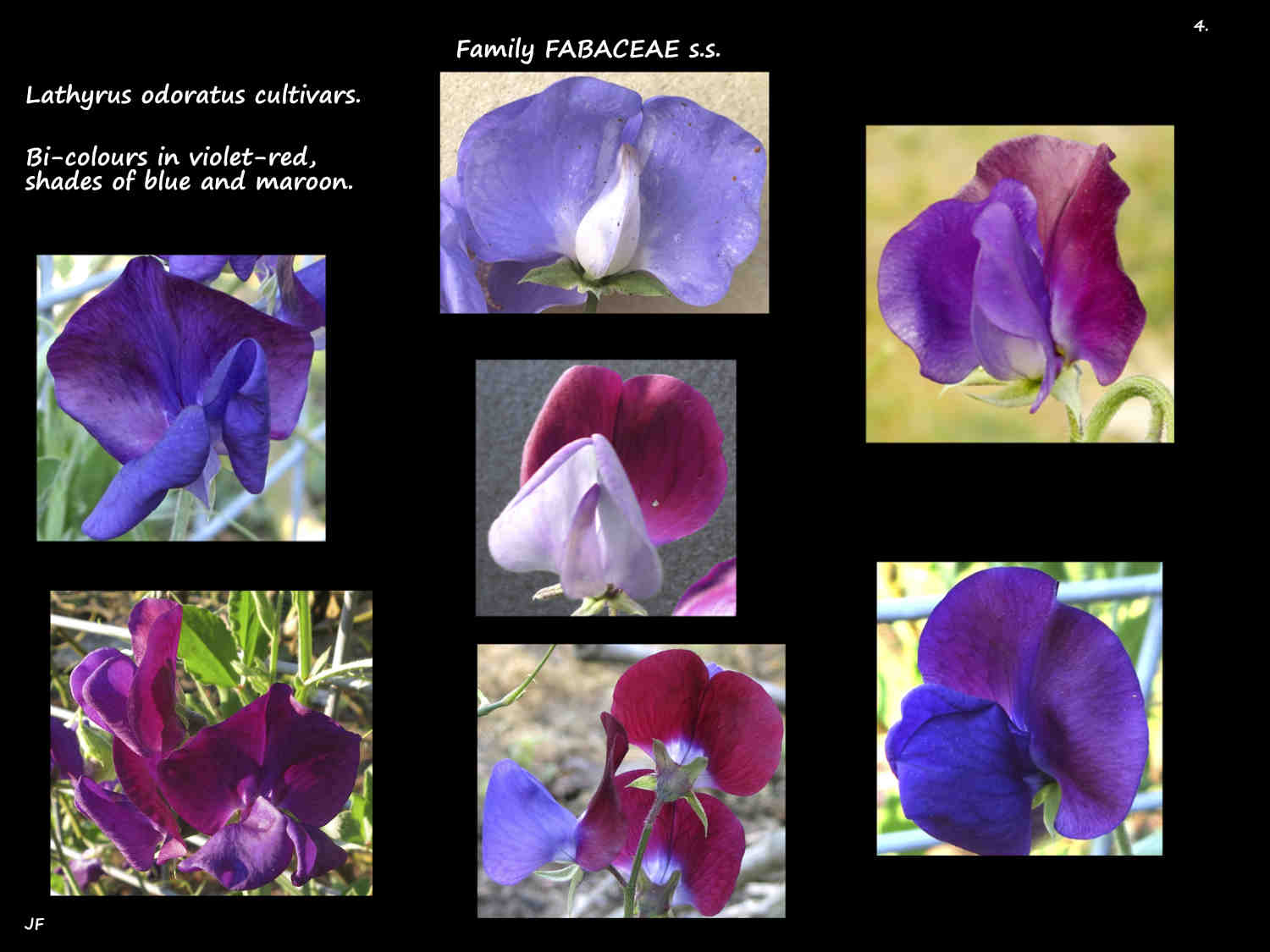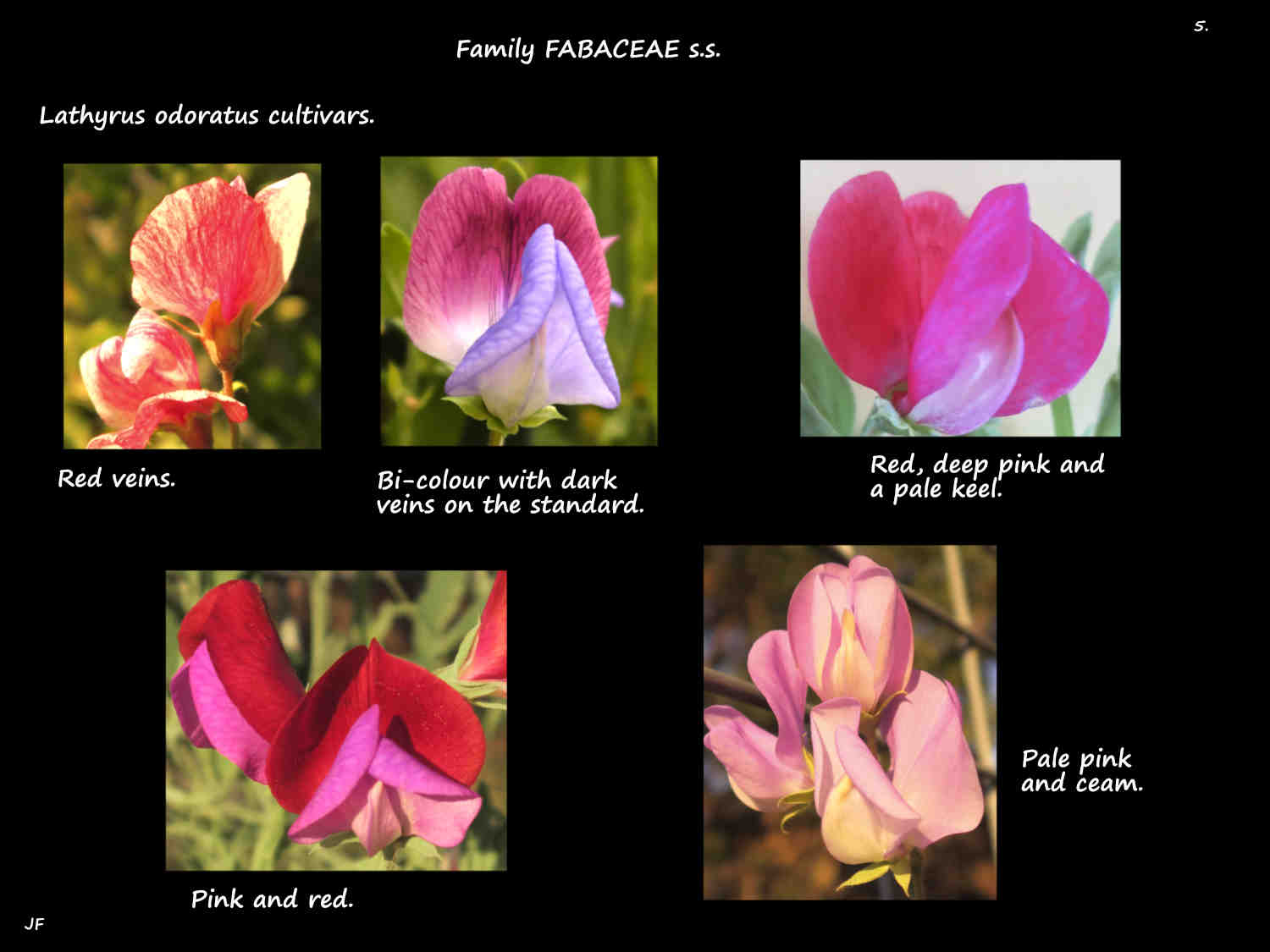Lathyrus odoratus.
The commonly seen Sweet pea is from southern Italy and Sicily.
They are annual plants up to 2 m high when supported.
The ribbed stems have wings and simple hairs.
The alternate blue-green leaves are on a hairy petiole up to 6 cm long.
There are 2 leafy lance-shaped stipules at the base of the petiole.
They usually have 2 smaller lance-shaped lobes at the base that point down the stem.
Leaves are pinnate with 1 pair of opposite leaflets and a branched terminal tendril.
The elliptic or ovate leaflets are up to 5 cm long.
Inflorescences are axillary racemes with up to 3 or 4 flowers on short stalks.
The inflorescence stalk (peduncle), bracts and flower stalks (pedicels) have hairs.
The bell-shaped calyx tube has 5 longer pointed lobes that curve outwards.
The typical pea-like flowers, 2 to 3 cm long have a standard, 2 wings and 2 fused keel petals.
Wild plants have scented reddish purple and violet flowers.
The stamen bases are fused into a tube open along the top.
The superior ovary has 1 locule with numerous ovules.
The single style has hairs on the upper side and a small head-like stigma.
The long, hairy laterally flattened fruit pods are up to 7 cm long.
**********************
Garden plants are almost always cultivars and include tall or dwarf plants.
Dwarf or miniatures up to 30 cm high may have leaves with no tendrils.
Cultivars come in a wide range of colours.
Single colours include shades of pink, red, carmine, maroon and salmon; pale to deep blue, lavender and deep purple-red as well as pale cream and white.
Many are 2-toned such as white with a pale or dark pink edge; white with mauve or deep purple-red; white with a lavender centre and lavender with cerise.
Some are streaked, have darker veins or the petals may have a frilled edge.
Colours may change as the flower ages – mauve to deep blue, apricot to pale orange and pale pink to turquoise.
J.F.
